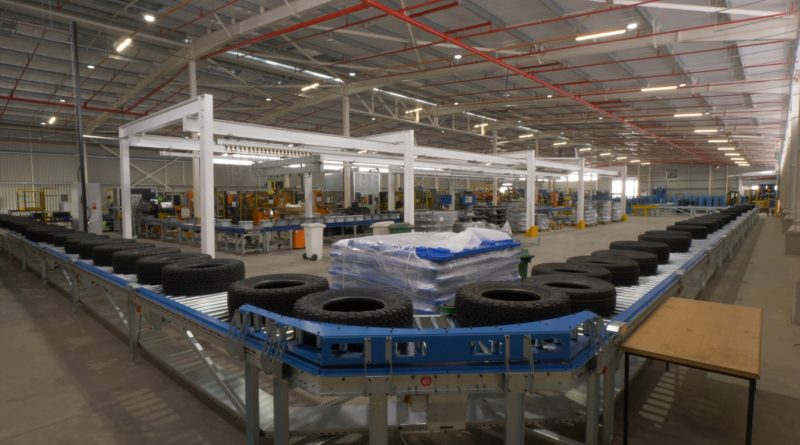Why tyre evolution still matters today
TEPA provides a fascinating insight into the path the humble tyre has travelled, from rickety horse-drawn carriages of the 1800s to modern-day high performance super cars. This is Part One of a three-part series on the evolution of tyres.
The tyres on your vehicle are far more than just inflated rubber; they’re a rolling testament to human ingenuity. Knowing their story is the first step in ensuring they keep you safe on the road, says the Tyre, Equipment and Parts Association (TEPA), a proud association of the Retail Motor Industry Organisation (RMI).
“In essence, tyre technology has gone from simple rubber bands to highly complex, multi-layered, chemically engineered marvels,” says Dylan Petzer, national vice chairman of TEPA.
“Understanding the evolution of tyres matters for many reasons, one of the most important being it can help you to make informed decisions about the many different types of tyres available today.”
While John Boyd Dunlop, a Scottish veterinarian, is widely credited with inventing the first pneumatic (air-filled) tyre in 1888 for his son’s tricycle, the first pneumatic tyre was actually patented 43 years earlier by another Scot, Robert William Thomson.
In 1845, Thompson secured patents for his “aerial wheels” that consisted of a hollow belt of vulcanised India-rubber inflated with air, encased in a strong outer casing of leather or canvas which was bolted to the wheel.
This created a “cushion of air” between the wheel and the ground, drastically reducing noise and improving comfort. He even demonstrated his “aerial wheels” in London’s Regent Park in 1847 on horse-drawn carriages that ran for over 1 200 miles without issue!
Despite his ingenuity, Thomson’s invention was ahead of its time. The high cost of manufacturing rubber inner tubes then, combined with the lack of demand (the motor car hadn’t been invented and bicycles were only just starting to gain traction), meant his pneumatic tyre wasn’t commercially viable. It was too expensive; a mere curiosity.
Dunlop’s patent was granted in 1888, but two years later declared invalid because Thomson’s earlier patent came to light. However, Dunlop’s timing was impeccable. The popularity of the bicycle and the imminent arrival of the automobile created the perfect market for his version of the pneumatic tyre, leading to its widespread adoption and the eventual establishment of the famous Dunlop Rubber Company.
The big game-changer for rubber was the discovery of vulcanisation by Charles Goodyear in 1839 (patented in 1844). Vulcanisation is the chemical magic that transformed raw, sticky and unstable natural rubber into a durable, elastic and heat-resistant material.
Without vulcanisation, early tyres would have melted into a sticky mess on a hot South African summer’s day and cracked like pottery in winter. It truly was the bedrock for modern tyre development, allowing rubber to be used reliably in industrial applications, including, eventually, the robust tyres we know.
The radial tyre effectively modernised driving, making it safer, more comfortable and more economical. It wasn’t an instant takeover – some car manufacturers were initially reluctant to re-tool for the different characteristics of radial tyres, but by the 1970s they had largely replaced bias-ply tyres in passenger vehicles globally.
Today, a modern tyre is a complex cocktail of materials, meticulously engineered for performance, safety, and longevity. These include:
• Natural and synthetic rubber
• Carbon black and silica
• Steel and textile cords
• An array of other chemicals and additives
Petzer explains why knowing the history of tyres matters:
Tyres are your only contact with the road: Your tyres – the patches of rubber, each roughly the size of your hand – are literally the foundation of your vehicle’s safety, performance and stability.
Safety first: Proper tyre maintenance isn’t just a suggestion, but a life-saving habit. All the incredible engineering mentioned only works if you check your tyre pressure, ensure adequate tread depth and have them rotated.
Specialised compounds: The constant evolution of rubber chemistry allowed for the creation of specific compounds – soft, high-grip compounds for performance cars, hard, durable compounds for long-haul trucks and temperature-sensitive compounds for winter tyres. The introduction of silica in the 1990s was a game-changer for balancing wet grip and low rolling resistance.
Performance demands: As cars gained sophisticated suspensions, powerful braking systems and advanced stability controls, tyres had to keep pace. They became the crucial link, translating electronic commands into physical action (low-profile tyres, reinforced sidewalls, asymmetric and directional tread patterns, the pursuit of efficiency and integration with vehicle electronics).
“Each evolutionary step has been a direct response to the ever-increasing demands of speed, weight, safety, performance and efficiency placed upon them by the vehicles and driving conditions of their era,” Petzer concludes.
“It’s a continuous journey and, frankly, a miracle these four round bits of rubber do what they do! Take good care of your tyres and they will take good care of you – well into the next century!”




